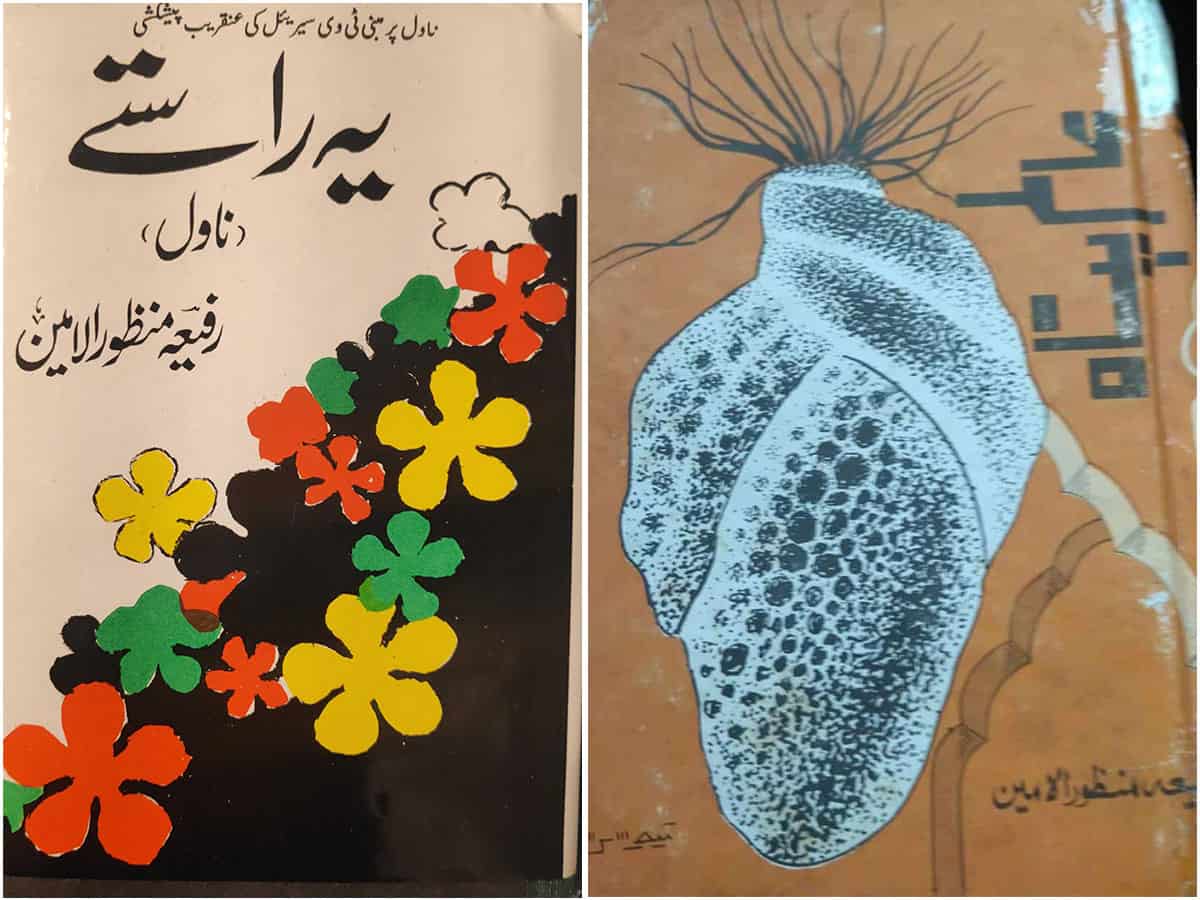Daneesh Majid
“My mother was very particular about showcasing Deccani culture that is renowned all over the world,” says Dr. Zishan Samiuddin.
Be it her time in Hyderabad, Houston, or during sojourns in other Indian cities, the daughter of Hyderabad’s two legendary Urdu figures — author Rafia Manzurul Amin and scholar, poet, and media professional Manzurl Amin — grew up around the rich literary ambiance that pervades a writer’s household.
Best known for her novel Alampanaah, Rafia Manzurul Amin sowed herself into the patchwork of literature that chronicled the city’s feudal legacy. Of course, she didn’t turn a blind eye to debaucherous and exploitative excesses of the aristocracy that Bollywood and English/Urdu literature popularized. Yet she also portrayed a stratum of enterprising nawabs who shed such practices and placed a high emphasis on education.

Left: Yeh Raaste
Right: Alampanaah
A quintessential masterpiece of the often-overlooked body of Hyderabad-centric Urdu literature, the book was adapted into the memorable 1990s Doordarshan TV show Farmaan.
The prolific writer who has over 200 short stories and three fiction masterpieces to her credit, began her career in the late 1970s. Amin’s first novel, Saare Jahaan Ka Dard, was set in pre-militancy Kashmir, where her husband served as the Assistant Station Director at All India Radio – Srinagar.
Reflecting on the less tumultuous times of the quaint Valley, she recalls, “I used to board a shikara boat daily to go to school across the Jhelum. The cherry blossoms would be in full bloom.”
Even before conflict cast a pall of gloom over the landscape punctuated by these blossoms, Manzurul Amin returned to the University of Kashmir to establish the Journalism department.
Like other talented Hyderabadi academics such as Mohiuddin Qadri Zor and Abdul Qadir Sarwari who were pioneers of the institution’s Urdu department, Manzurul Amin too made a mark on the university. After his stints in Kashmir and in Jamia Milia Islamia’s Mass Communication departments, the couple returned to Hyderabad where he taught at Maulana Azad National Urdu University’s Journalism Department.
“He really adored his students. Plus, for him learning was a two-way street as he wanted to learn from the students just as much they wanted to learn from him. Plus he used to often ask guests and students to stay back for dinner,” Samiuddin remembers.
His repertoire wasn’t just limited to academic content. The snow of J&K’s winters gained lyrical existence via his pen in the anthology of poems which he authored, Jalein Aatishkadey.

Left: Ghalib ka Safarnama-e-Farang
Center: Television: Dunya Ka AaathwaaN Ajooba
Right: Jaleein Aatishkadey
Zamir Ahmad Bhat, Srinagar native and a former student of his at MANUU, said, “Whether it was Professor Amin’s generosity, his wife’s charm, or the sheer command both had over their respective crafts, my hometown and I are indebted to them.”
Clearly, the cities of Hyderabad and Srinagar still bear the imprint of Professor Manzurul Amin and Rafia Manzurul Amin. In fact, the entire continent owes their indelible marks on literature and related fields.


